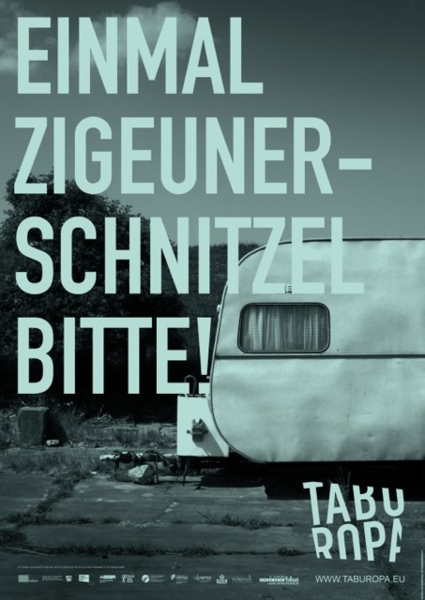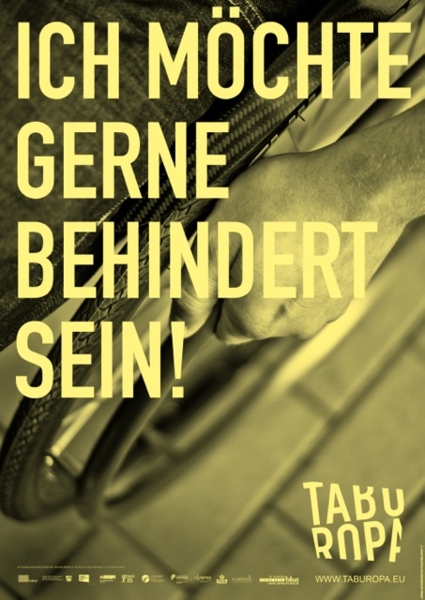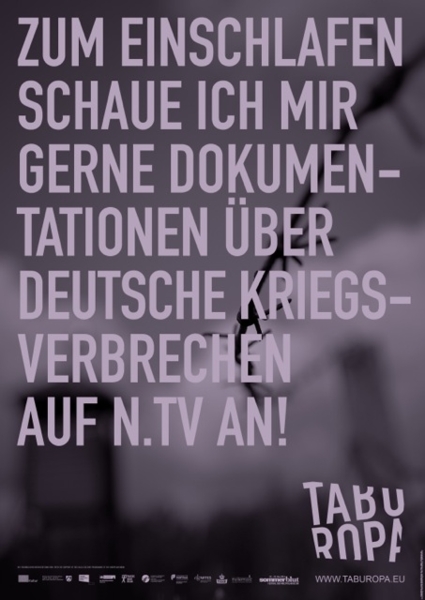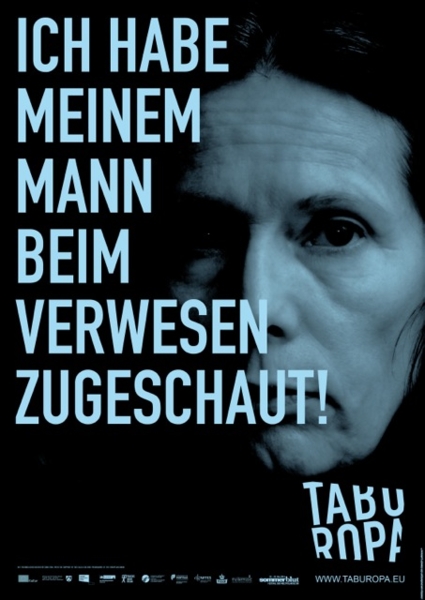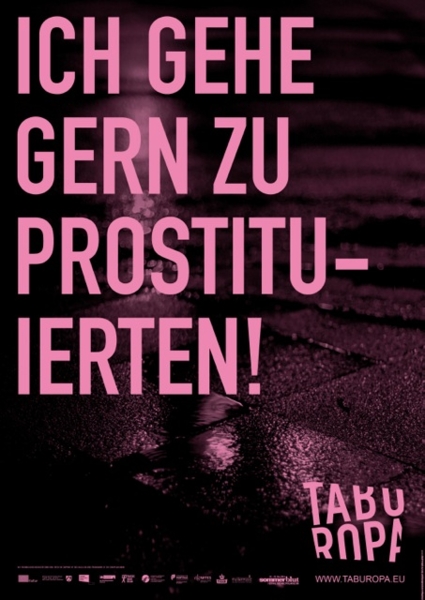Artist Diary - written by André Erlen during Launching Phase Cologne
first published: 10.03.2014
The Launching Phase of the Taburopa project brought all participants together for the first time. 25 artists and cultural managers from Belgium, Germany, Poland and Portugal exchanged and discussed four days long in Cologne (Germany) the wanted artistic process, and researched on the question: what is the function of taboos in modern societies?
In the substantive work the idea was to find a common definition of the term “taboo”, in order to realise the Research Phase in the different cities in the next step of the project. We started exchanging vague and individual ideas and thoughts about what a taboo really is. Very soon we realised, that in our minds exist very different concepts of what is and what is not a taboo. A lot of questions appeared to us. What is the difference between a taboo and a code of behaviour, a taboo and a law? Does a core taboo exist? And, finally, do taboos still exist?
To bring the discussions to an advanced level we had organised meetings with scientists and specialists, excursions, and artists performances in the nights. The program choices followed different topics. We wanted to introduce people who are dealing with taboos in their daily profession (the pathologist), who give a scientific background on the origin of the term taboo (guided “Taboo”-tour though the ethnological museum), who worked out a timeless definition of the term taboo (psychologist and taboo researcher), who guide us through places that carry a taboo (NS-Ordensburg Vogelsang), and we wanted to present work of artists, that touch taboos (movie “Nekromantik”). The impulses coming from these activities have been very different, and led in some cases to controversial discussions – maybe, because taboos can be very powerful, common or personal borderlines, we do not want to touch or cross. But some answers to our starting question appeared - how we could define a taboo - in the lecture-talk of the Dr. Helmut Kraft, a psycho analyst and taboo researcher. He quoted some of his thesis:
1. Taboos are vital. Tabooing and taboos are phenomenons of our time. It is not a phenomenon of former times and cultures.
2. What is a taboo? Taboos are "rules of avoiding", and by contravening such rules one is threaten with exclusion of society.
3. Taboos find themselves always in a process of change. Taboos regulate our acting, talking, and/or thinking.
4. Taboos appear in a broad range - they can be conscious and openly discussed, or provided nonverbal or have an effect unconsciously.
5. Taboos serve the development and securing of identity.
6. Taboos are always dependent on context - every group, every location and every time often have very different taboos.
7. There is no core taboo (Ur-Tabu), to which we can relate all our taboos.
8. To taboo something is an inherent psycho-social mechanism, that effects intra-psychic ("in us") and/or inter- personal (related to others) ways.
9. The effectiveness of taboos is rooted in the pre-oedipal phase. The threatened exclusion out of society touches existential fears (fear of death; Todesangst) -> this thesis is based on the idea, that in age of 0-4 years (pre-oedipal) we experience the fear of being left, of being dropped out. "Mom and daddy will leave you, if you don't behave well" - seems to be the biggest punishment for a little one.
10. "Mana" appears in groups by interacting, and can be used as conceptual term to describe effectiveness, power, and aura of taboos. -> taboos need a person/system to symbolize the taboo. He or it stands for the punishment after breaking taboos.
A very helpful idea is, that taboos are a timeless phenomena, that seems to be necessary to organise a guideline of behaviour for the members of a society. The content of a taboo depends on the context, for example time, space, and reason.
We can add another interesting quote from Mr. Kraft's book Tabu – Magie und soziale Realität: “Taboos promote stability – the breaking of taboos makes progress possible.”
The four days where packed with program and discussion. It was a overwhelming time for all participants. Maybe the program was a little too ambitious. In the end some participants claimed, that there was not enough time for “spontaneous” conversations and meetings, and body work. They were obviously talking from their hard. Some others simply said, that this was the most intense work and best time they spend in their art life since a long time.
TABUROPA-Posters on taboos.
